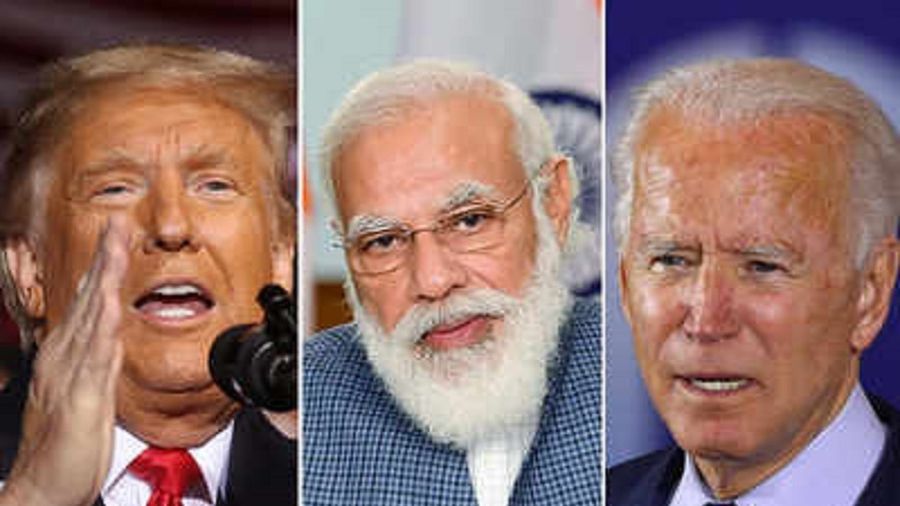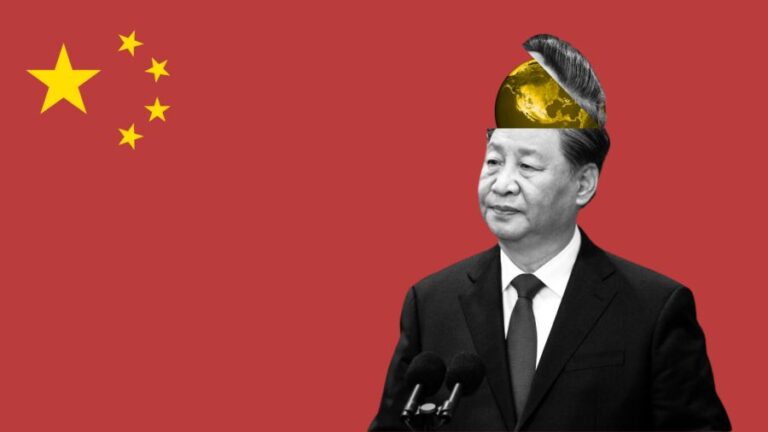The 18-Month-Long Sequence of Complications in Indian-American Relations
The past 18 months of Indian-American relations have been characterized by the US abusing its South Asian military-strategic partner as a vassal state instead of respecting it as the equal partner that India truly believed that it was.
The Last 18 Months Of Indian-American Relations
Indian-American relations have recently been complicated by an 18-month-long sequence of events that have resulted in these two Great Powers recalibrating their strategic ties. Former US President Trump envisioned that South Asian state acting as his country’s most important continental bulwark for “containing” China, but it was ironically in the last six months of his term that ties became troubled. Everything changed so much between them in the past year and a half since then that India ended up entering into a de facto hemispheric-wide “balancing” alliance with Russia earlier this month. That in turn established clear limits to India’s military-strategic ties with the US going forward since New Delhi clearly considers Moscow to be its most important partner in this respect. What follows is a list of the top developments that contributed to this global geostrategic game-changer:
The Chinese-Indian Galwan River Valley Clashes
Summer 2020 saw the outbreak of an undeclared and low-level war between China and India over disputed Himalayan territory. Tensions had been boiling for the past few years and finally reached their breaking point during that time. Russia reportedly continued providing arms to India despite its ongoing clashes with Moscow’s Chinese strategic partners. Furthermore, the Indian Defense Minister flew to the Russian capital that summer to clinch additional arms deals in order to bolster his country’s defensive capabilities against its neighbor. Even though the Trump Administration envisioned India functioning as the US’ most important continental bulwark for “containing” China, it didn’t provide any emergency military assistance. This sorely disappointed India, which expected much more support from its newfound military-strategic partner than only the intelligence that it reportedly received.
CAATSA Sanctions Threats
Making matters worse, the US reaffirmed its CAATSA sanctions threats against India in response to that country’s promise to remain loyal to its S-400 air defense deal with Russia. This was an extremely unfriendly development since New Delhi maintained that it urgently required those systems in order to protect itself from China, especially after the Galwan River Valley clashes. Objectively speaking, Russia’s S-400s are the best such systems in the world and far superior to their American analogues. India never intended for these purchases to be politicized, let alone by its new American military-strategic partner, as some kind of “anti-American” move. Since the issue is one of pressing national security importance, India refused to submit to the US’ demands to cancel that contract and bravely defied its sanctions threats, which America regarded as brazen disobedience.
The US Violates India’s Exclusive Economic Zone
The Biden Administration continued its predecessor’s trend of counterproductively complicating relations with India after violating that country’s exclusive economic zone during a so-called “freedom of navigation operation” (FONOP) near the archipelago of Lakshadweep in early April. India is a proud country that considers itself a Great Power so this was absolutely unacceptable for its self-image. The US was basically signaling that it regards India not as an equal military-strategic partner for jointly “containing” China, but as vassal state that it can publicly disrespect with impunity. It’s unknown why America decided to abuse India like this since its decision makers must have predicted that their counterparts would react very angrily to what happened. In fact, it was arguably this development which played a key role in inspiring the latter to seriously begin reconsidering their relations with the US.
Biden’s Afghan Withdrawal Decision
Shortly after the US violated India’s exclusive economic zone, Biden announced later that same month that he’ll respect his predecessor’s decision to withdraw from Afghanistan but said that he’ll extend the deadline by a few months for logistical reasons. This was an unpleasant surprise for India, which expected Biden to reverse that policy. After all, the US-backed Afghan government was also allied with India and thus afforded New Delhi so-called “strategic depth” vis-à-vis its neighboring Pakistani rival. Biden’s decision to go ahead with Trump’s withdrawal risked complicating India’s regional strategic plans. This in turn prompted its decision makers to begin panicking since they were unsure how they’d maintain their influence in that geostrategic state without the US propping up its government. In hindsight, this was the beginning of the end of close Indian-American ties.
American Criticism Of India’s Democracy & Human Rights Record
As if the US was hellbent on offending India in the worst ways possible, its Acting Assistant Secretary of State for South and Central Asia told Congress in early June that he had very serious concerns about the state of democracy and human rights in India. Regardless of however one feels about the veracity of his remarks, they nevertheless were interpreted by India as unprecedented American meddling in its internal affairs, especially since they also touched upon Kashmir. It was already bad enough that the US had done all of the previously enumerated things to India over the past year, but now it finally crossed the line by touching on its most sensitive issues. There was no way that Indians could trust the US as a reliable ally after what it had just done. This was beyond unacceptable and representative of a hegemonic bully trying to intimidate its new ally into vassalhood status.
The “New Quad” With The PAKAFUZ Countries
To add insult to injury, the US then declared the creation of a so-called “New Quad” a month later in July comprised of itself, Pakistan, Afghanistan, and Uzbekistan, the last three of which agreed in February to construct a railway between them (PAKAFUZ). This significantly improved Pakistan’s geostrategic standing vis-à-vis India’s American ally and showed that the US will actively advance Islamabad’s transregional interests despite also supposedly wanting to retain balanced ties with New Delhi. Furthermore, it signaled to India that the US accepted Pakistan’s post-withdrawal strategic presence in Afghanistan, and will actually work to diversify it through that connectivity project which forms the basis for their “New Quad”. Indian decision makers became skeptical of the US’ motives in the region and started wondering what awaited their country’s influence in Afghanistan after the American withdrawal.
America’s Chaotic Evacuation From Afghanistan
They received their answer a month later in August when America chaotically evacuated from Afghanistan after the Taliban’s capture of Kabul. This was the worst-case scenario for India and prompted all of its diplomats to flee from there for their safety. That unprecedented setback for their regional strategic plans was entirely due to the US’ sloppy policy, which saw America refuse to draw red lines for deterring the Taliban’s advance in the face of its forces’ gradual withdrawal. Feeling emboldened by the US’ promise not to strike its fighters no matter what in order to avoid being drawn back into the Afghan quagmire, the Taliban went on a nationwide offensive that ended up dismantling India’s influence there. America’s abandonment of its local Afghan allies and even its own citizens there confirmed India’s fears that the US cannot be trusted or relied upon no matter what.
America’s AUKUS Surprise
After unilaterally ruining its military-strategic relations with India over the past 15 months for reasons that are only known to its own decision makers, the US secretly decided to remove the Quad’s anti-Chinese security element by transferring it to AUKUS. This surprise announcement shocked India since the country still believed that it was possible to repair its damaged relations with the US in order for them and their fellow Quad allies to return to coordinating their “containment” efforts against China. Their decision makers had no advance notice that any of this was going to happen, which they interpreted as a stab in the back after all they’d done to promote their American “ally’s” anti-Chinese policies over the past few years. Rightly feeling betrayed, they decided to double down on the Russian pillar of their multi-alignment policy, which led to the game-changing outcome of this month’s summit.
Concluding Thoughts
The past 18 months of Indian-American relations have been characterized by the US abusing its South Asian military-strategic partner as a vassal state instead of respecting it as the equal partner that India truly believed that it was. America continually disrespected India in completely unacceptable ways and even worked to advance the interests of its Pakistani rival in Afghanistan through the “New Quad” at New Delhi’s perceived expense. Moreover, the Biden Administration never informed India of its decision to withdraw from Afghanistan nor its secret negotiations to de-securitize the Quad by replacing that bloc’s anti-Chinese function with AUKUS, which India only heard about from media reports. In order to protect its grand strategic interests, India wisely recalibrated its multi-alignment policy by fully embracing its historical Russian ally, which will change the nature of US-Indian relations going forward.







